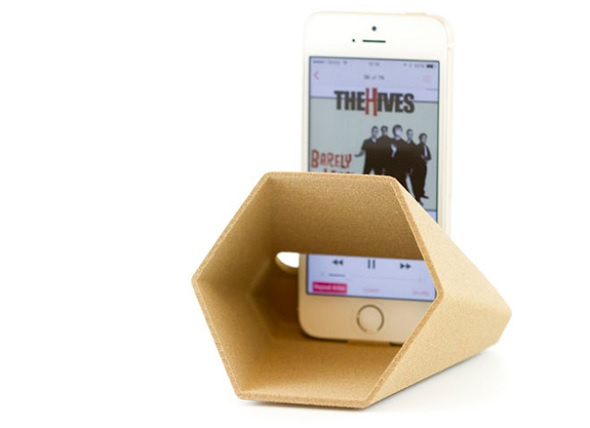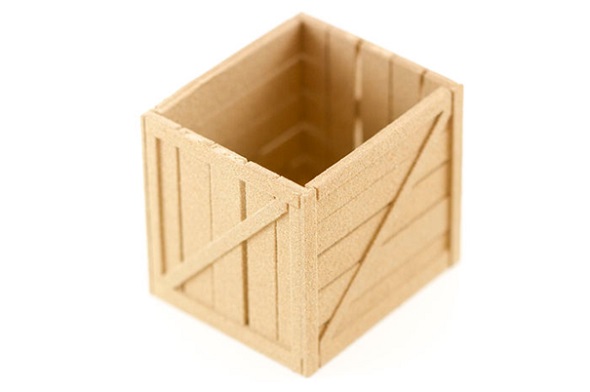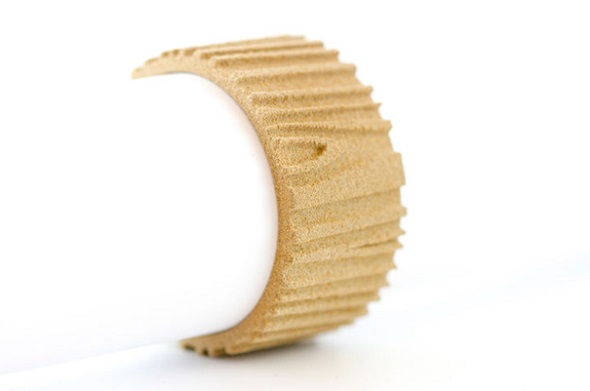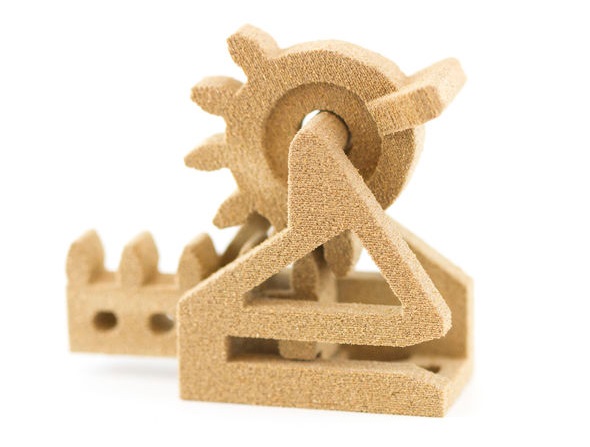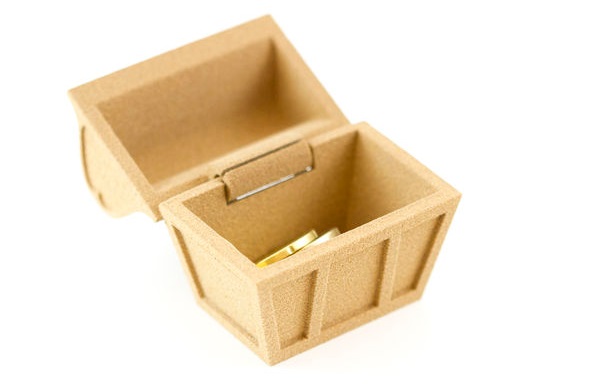A few weeks ago, we covered Materialise’s launch of a laser sinterable wood composite and the subsequent Wood Challenge that asked designers to come up with some creations tailored specifically to take advantage of the new material’s particular qualities. The five top designs would get 3D printed for free and sent to their creators, which is exactly what happened.
The first winner designed something that is actually quite common in wood 3D printing: an amplifier, specifically, the Hexa-Phone Amplifier by James Novak. This is no surprise as Novak is an incredibly talented designer who has also already created a very innovative Bike Frame, generatively designed and laser sintered by Materialise. With this item, he wanted to show the potential of 3D printed wood for useful home décor items and tech gadgets.
The Wooden Crate by Ferdinand Jahnke also makes a lot of sense as a wooden project. The second winner of Materialise’s challenge can be used on a desk to hold pens and other office supplies. It also shows that 3D printed wood could be used for creating scale models and small-scale reproductions of typical wooden objects.
Naturally inspired by a tree shape, the third winner is Odette Coutant’s Tree Napkin Ring’. The designer combined the basic structure and surface of a tree with the simplicity of a stylish napkin ring. The best part is that no trees were cut to make this product, as Materialise’s laser sinterable wood is made from wood scraps.
The fourth winner (the real wooden medal winner), Kurt Plagge, demonstrated with his design that interlocking and movable parts are possible with this 3D printing material. His Wood Rack, inspired by an oil rig, can be moved and operated by hand. This is not an object you would imagine being made of wood and it certainly lets us imagine the possibilities, as the prices for this technology comes down and the machine’s size capabilities go up.
The last winning design, on the other hand, is definitely something you would imagine being made of wood: a Teeny Tiny Treasure Chest by Lucas Alousis. It also combines many of the features from the previous designs: it is fully functional without needing to be assembled. It is also another example that 3D printing miniatures and small-scale reproductions in wood can offer great results.
As you can see from the video, the Materialise team seems enthusiastic about this new material, almost as much has they were with the TPU last year. It is understandable, as new materials do open up infinite new possibilities, especially when used with SLS technology to make final use, finished products. And wood is the perfect material to connect the best from the past with the future of manufacturing.



